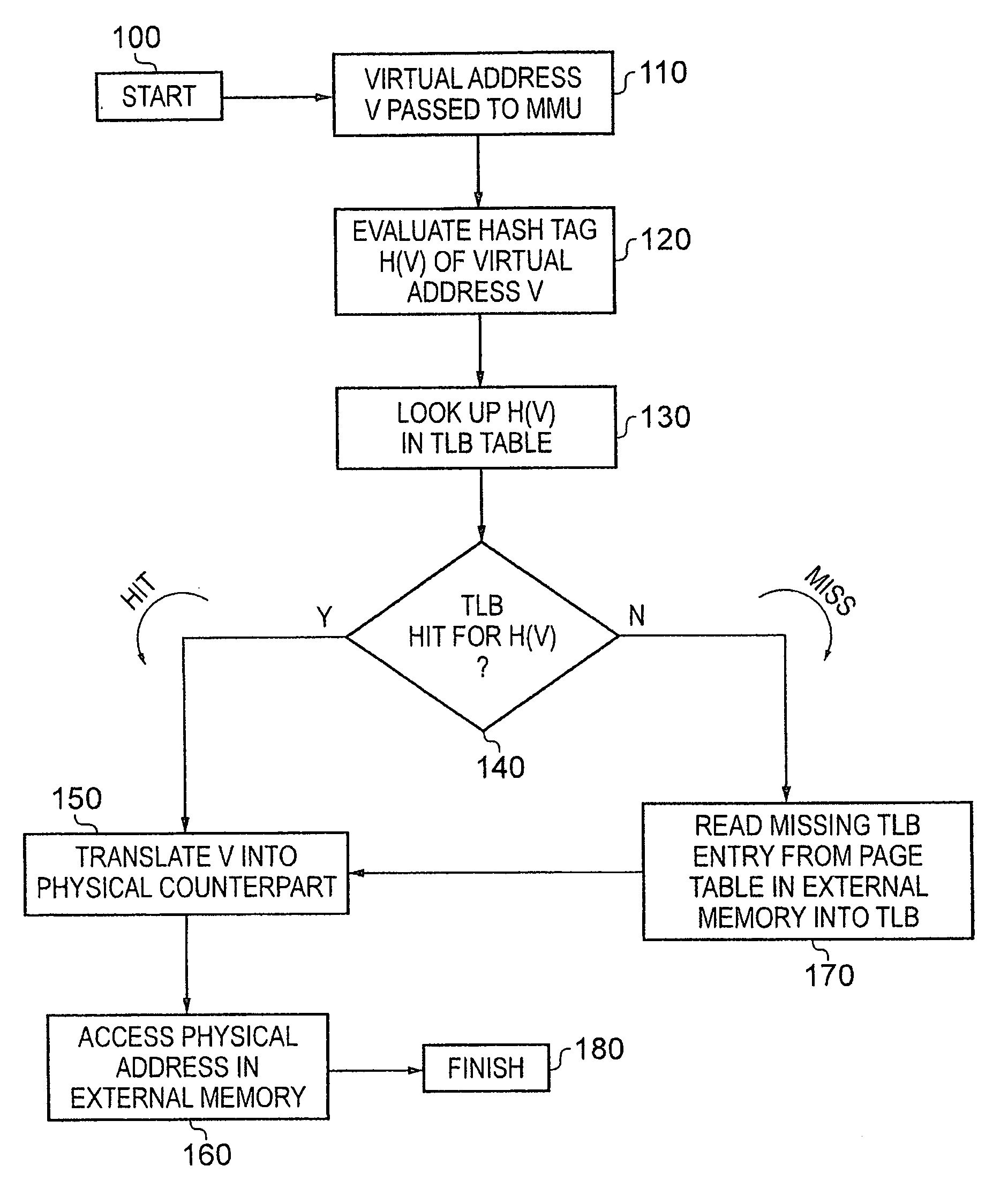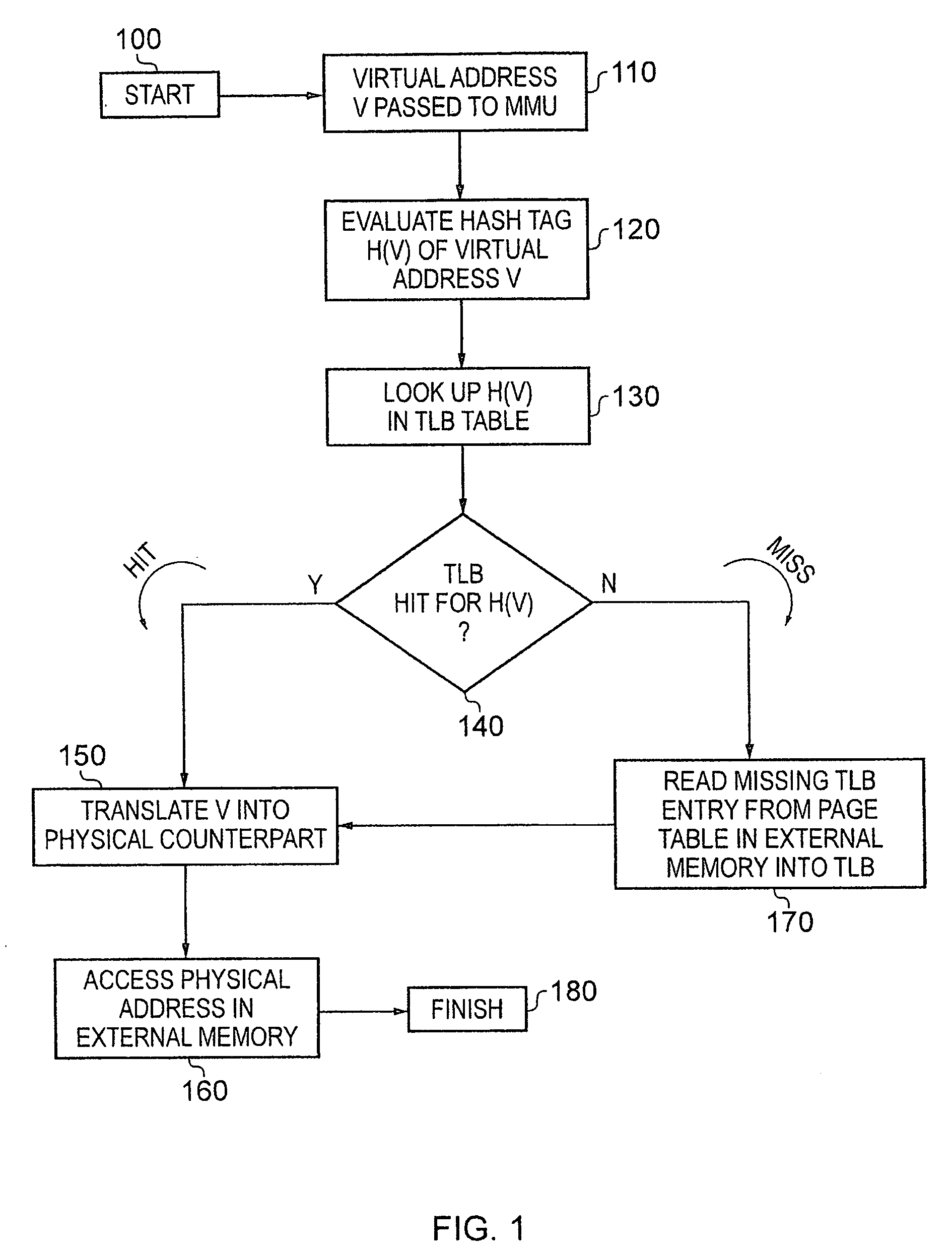Video reference frame retrieval
- Summary
- Abstract
- Description
- Claims
- Application Information
AI Technical Summary
Benefits of technology
Problems solved by technology
Method used
Image
Examples
Embodiment Construction
FIG. 2 schematically illustrates a system including a video data processing apparatus according to one embodiment of the present invention. Video processor 200 is arranged to perform video data processing operations and comprises a processor core 210, a video direct memory access (DMA) unit 220 and a memory management unit (MMU) 230. The MMU 230 has an internal storage unit 235, also known as a translation lookaside buffer (TLB). The video processor 200 communicates with the remainder of the system via bus 240. Also connected to bus 240 is external memory 250 and graphics processing unit (GPU) 260. GPU 260 is also connected to display unit 270.
In operation, core 210 issues memory access requests for data stored in external memory 250. These memory access requests are handled by video DMA 220 which interfaces between core 210 and MMU 230. In particular in the present context, the video DMA 220 takes a queue of memory copy requests from the core 210 and administers these data transfer...
PUM
 Login to View More
Login to View More Abstract
Description
Claims
Application Information
 Login to View More
Login to View More - R&D
- Intellectual Property
- Life Sciences
- Materials
- Tech Scout
- Unparalleled Data Quality
- Higher Quality Content
- 60% Fewer Hallucinations
Browse by: Latest US Patents, China's latest patents, Technical Efficacy Thesaurus, Application Domain, Technology Topic, Popular Technical Reports.
© 2025 PatSnap. All rights reserved.Legal|Privacy policy|Modern Slavery Act Transparency Statement|Sitemap|About US| Contact US: help@patsnap.com



